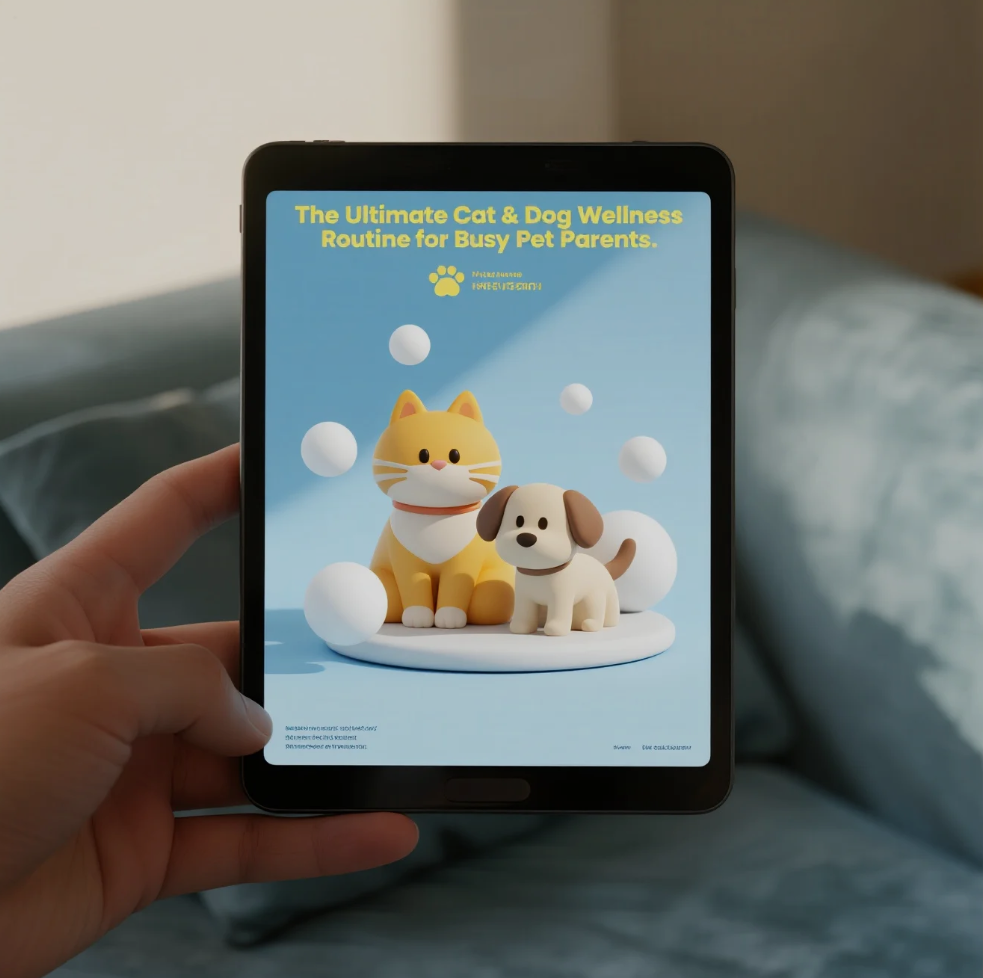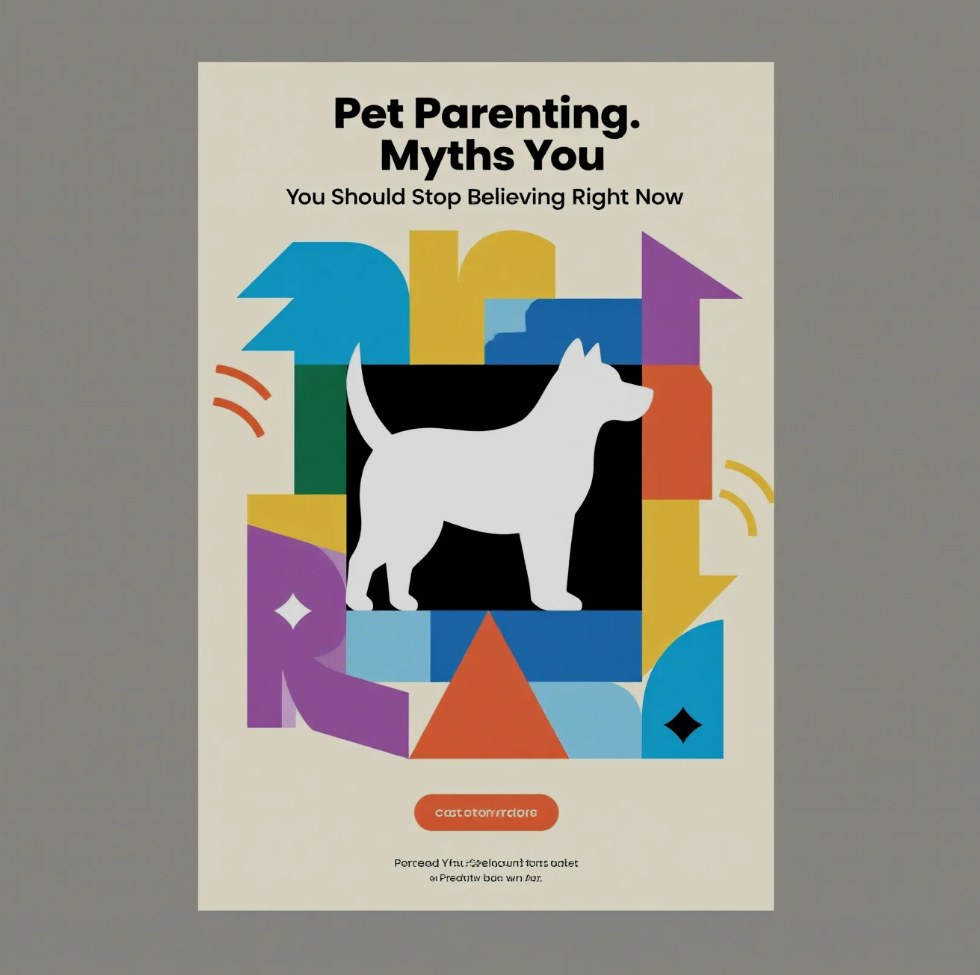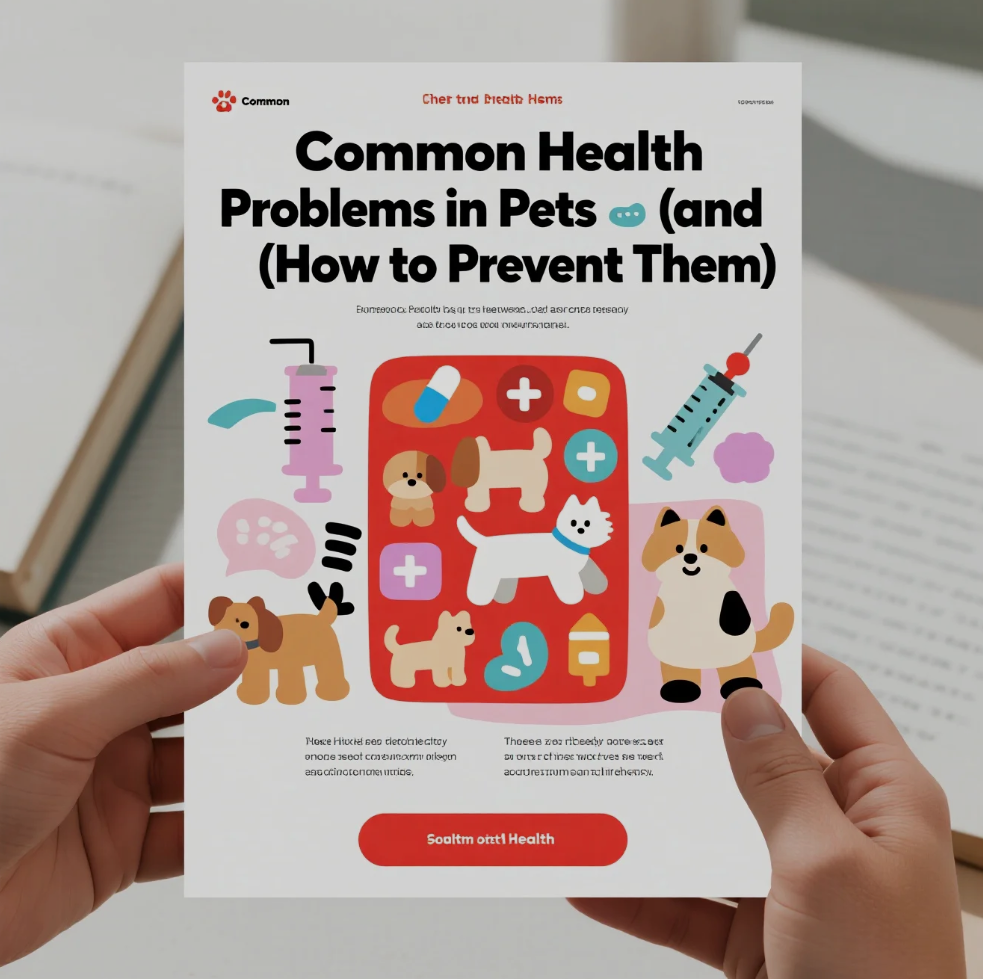The Ultimate Cat & Dog Wellness Routine for Busy Pet Parents
Balancing a busy schedule with proper pet care can be challenging, but the right daily routine ensures your cat or dog stays healthy, confident, and emotionally fulfilled. You don’t need hours each day—just consistent habits that fit your lifestyle. This guide breaks down a practical cat and dog wellness routine that any pet parent can follow.
1. Start With a Consistent Daily Structure
Pets thrive on predictability. A stable routine builds trust, reduces anxiety, and helps with training.
Daily Essentials
- Feeding at the same times each day
- Fresh water available 24/7
- Quick morning check-in for mood, energy, and appetite
A stable routine tells your pet, “You are safe, and your needs will always be met.”
2. Nutrition: Quality Over Quantity
A strong wellness foundation starts with balanced meals.
Smart Feeding Tips
- Choose age-appropriate, vet-approved food
- Monitor portion sizes to prevent weight gain
- Limit treats to 10% of daily calories
- For cats: ensure enough moisture (wet food helps)
- For dogs: avoid sudden food changes to protect digestion
For deeper guidance, check resources from reputable sources like the American Veterinary Medical Association. (Outbound link placeholder)
3. Daily Physical Activity (Even if You’re Busy)
Exercise keeps pets healthy, improves behavior, and prevents stress.
For Dogs
- 15–20 minutes of brisk walking
- Short play sessions (fetch, tug, scent games)
- Mental puzzles for indoor days
For Cats
- Laser pointer or wand toy play
- Climbing structures and scratching posts
- Food puzzles to encourage natural hunting instincts
A few short sessions throughout the day are more effective than one long one.
4. Keep Their Minds Active
Mental stimulation is just as important as physical exercise.
Easy Enrichment Ideas
- Rotating toys weekly
- Treat-dispensing puzzles
- Interactive feeders
- Training a new trick (takes only 3–5 minutes!)
- Hide-and-seek games around the home
A stimulated mind prevents boredom, anxiety, and destructive behavior.
5. Grooming as a Wellness Habit
Regular grooming isn’t cosmetic—it’s essential health care.
Weekly Grooming Checklist
- Brushing to reduce shedding and hairballs
- Ear cleaning (especially for floppy-eared dogs)
- Nail check and trimming as needed
- Dental care with pet-safe toothpaste
For long-fur breeds, brushing should be daily to prevent matting.
6. Preventive Vet Care: The Silent Hero of Wellness
Routine checkups catch problems early.
Monthly
- Flea, tick, and heartworm prevention
- Weight check
- Coat and skin condition review
Yearly
- General health exam
- Vaccinations
- Dental cleaning (as recommended)
Busy owners often overlook early symptoms—consistent vet care solves that.
7. Build Emotional Wellness Through Small Daily Moments
A pet’s happiness relies on bonding and emotional security.
Easy Daily Connection Moments
- 5 minutes of focused affection
- Gentle brushing
- Calm talking during feeding
- Praise when they behave or learn something new
These micro-moments build trust far more effectively than long but infrequent interactions.
8. Create a Safe, Low-Stress Home Environment
Pets need designated places to rest and decompress.
For Dogs
- A comfortable bed in a quiet corner
- A crate (if trained positively)
- A stable routine of household noises & lighting
For Cats
- Elevated shelves
- Hiding spots
- Clean, easily accessible litter boxes
A peaceful environment boosts confidence and reduces behavioral issues.
Conclusion
A great cat and dog wellness routine doesn’t need to be complicated. By focusing on consistency, connection, proper nutrition, mental stimulation, and preventive care, even the busiest pet parents can support a long, healthy, and joyful life for their pets. Small habits repeated daily make the biggest difference.
(more…)








